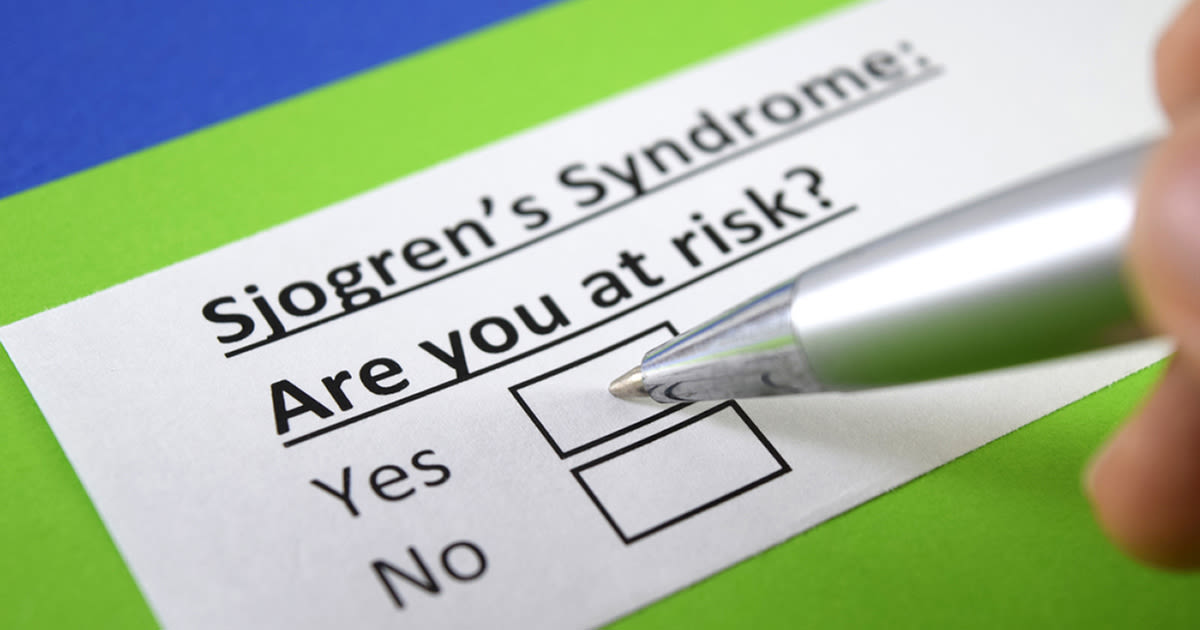Sjogren's syndrome: Causes and treatments

Sjogren's syndrome is an autoimmune disease that attacks and destroys glands responsible for keeping the eyes, mouth and other parts of the body moist and lubricated.
For this reason, dry eyes are a common symptom of Sjogren's syndrome.
The prevalence of Sjogren’s syndrome in the global population is unknown. German researchers have estimated that it occurs in about 0.2 percent of the adult population. The same study found that women are about 20 times more likely than men to be affected by the condition.
According to the Sjogren’s Syndrome Foundation, because the symptoms of Sjogren’s syndrome mimic those of other diseases, the condition often is overlooked or misdiagnosed. On average, it takes 2.8 years to receive an accurate diagnosis of Sjogren’s syndrome, the organisation says.
Causes of Sjogren's syndrome
Sjogren's syndrome is one of the more common autoimmune disorders. In these diseases, a person's white blood cells attack his or her own tissues and organs, damaging them.
Why abnormal immune responses develop and destroy a body's own tissues is not clearly understood. Ordinarily, our immune system recognises our own body parts as "friendly," and becomes activated only to fight and destroy "foreign" substances or harmful organisms, such as viruses.
Abnormal immune responses may be inherited, or they may be related to prior viral or bacterial infections.
Sjogren's syndrome can occur alone (primary Sjogren's syndrome) or it can occur along with other autoimmune diseases, such as rheumatoid arthritis, lupus, celiac disease or scleroderma (secondary Sjogren's syndrome).
How to know if you have Sjogren's syndrome
The classic symptoms of Sjogren's syndrome are: dry eyes, dry mouth, fatigue and joint pain.
Other symptoms include:
Contact lens discomfort
Dry sinuses and frequent sinus infections or nosebleeds
Sore mouth, tongue or throat
Difficulty chewing or swallowing
Dry or peeling lips
Dry and sore skin
Muscle pain without accompanying swelling
Vaginal dryness
Additional eye symptoms that can occur with Sjogren's syndrome include blurred vision, a gritty or burning sensation and light sensitivity.
Your optometrist may perform a number of tests to confirm a diagnosis of Sjogren's syndrome.
In one common test (called a Schirmer's test), the tip of a small strip of test paper is inserted under your lower eyelid to measure the amount of tears you produce over a certain period of time (usually five minutes).
Other tests may include use of dyes that colour your tears; your optometrist will then examine your eyes with a microscope to see how quickly your tears evaporate and whether any dryness-related damage has occurred to your cornea or conjunctiva.
Your doctor may also measure the amount and quality of saliva produced in your mouth and order other related tests, including blood tests. (Certain antibodies in the blood are commonly found in people with Sjogren's syndrome.)
A diagnostic test called Sjö (Bausch + Lomb) offers an even more sensitive and specific means of detecting Sjogren's syndrome. In addition to checking for the traditional antibodies commonly found in the bloodstream of patients with the disease, the Sjö checks for three additional biomarkers that are specific to Sjogren's syndrome for greater diagnostic accuracy, according to Bausch + Lomb.
How dry eye from Sjogren's syndrome is treated
Dry eye resulting from Sjogren's syndrome may require ongoing treatment with artificial tears, ointments or other remedies.
As many people with Sjogren's syndrome have a problem with their tears evaporating too quickly, oil- or lipid-based eye drops sometimes are especially helpful. These drops help slow down tear evaporation so the eyes can stay moist longer between blinks.
Your optometrist also will check for a problem called meibomian gland dysfunction (MGD), which is a leading cause of evaporative dry eye.
In this condition, the glands in the eyelids that secrete oil (meibum) into the tear film become inflamed and obstructed. A decrease in the amount or quality of the meibum may also be involved. This oil is essential to keep tears from evaporating too quickly. Successfully treating MGD can help reduce Sjogren's-related dry eye discomfort.
For pain or inflammation, you may also need to take nonsteroidal anti-inflammatory drugs (NSAIDs) such as aspirin or ibuprofen. If you have a severe case of Sjogren's syndrome, your doctor also may recommend immunosuppressant medications.
Side effects of Sjogren's syndrome
Chronic dry eye is one of the major symptoms of Sjogren's syndrome, so you must make sure your eyes are lubricated to avoid damage that can lead to scarring and infection of the eye.
Sjogren's syndrome also can cause dryness of the mouth that can lead to tooth decay or even loss of teeth. Use of mouth lubricants (artificial saliva) may be needed to keep the mouth adequately moist and to assist in swallowing.
Also, people with Sjogren's syndrome are more likely to develop lymphoma (cancer of the lymphatic system, which contains white blood cells that play a major role in fighting disease). Lymph nodes may become enlarged or swollen.
Sjogren's syndrome also can lead to vasculitis (inflammation of blood vessels) that can cause problems throughout the body.
Pregnant women diagnosed with Sjogren's syndrome should notify their doctor. Certain proteins produced by the immune system that are capable of attacking other potentially beneficial proteins in the body can be passed along to infants.
How to prevent dry eye and other Sjogren's syndrome symptoms
There are no known ways to prevent Sjogren's syndrome, but these steps may help ease symptoms:

Using artificial tears and drinking plenty of water can alleviate symptoms of Sjogren's syndrome.
Drink more fluids, especially water.
Chew sugarless gum or use hard-boiled sweets to moisten your mouth.
Regularly use artificial tears and ointments to keep your eyes moistened. (Your optometrist can recommend the best brands for your needs.)
Use saline spray for your nose.
Install a humidifier to help reduce dry eyes, nose, mouth and skin.
Tell your optometrist about any drugs you are taking, because some, such as antihistamines for allergies, can cause dryness.
Use vaginal lubricants if needed.
Don't smoke and avoid alcohol.
Sjogren's syndrome resources
If you have Sjogren's syndrome or know someone who does, additional information — including access to support groups and patient seminars — is available through the Sjogren's Syndrome Foundation, Arthritis Australia and the Garvan Institute of Medical Research.
Page published on Monday, 16 March 2020






